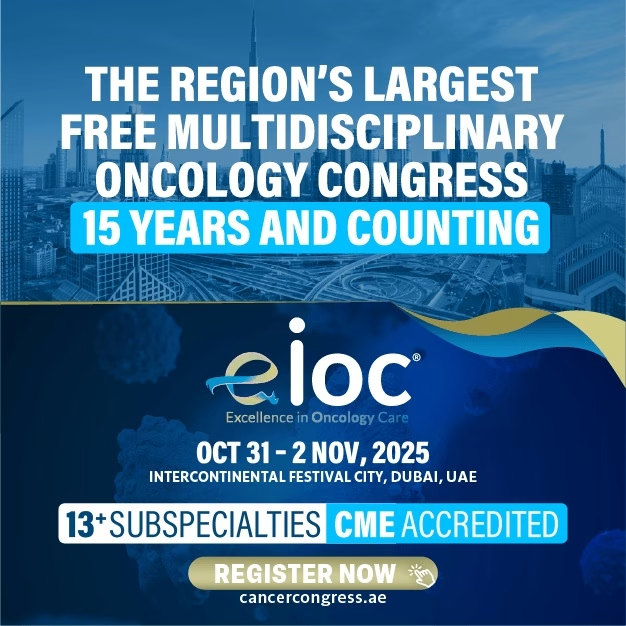Yes, we started 2025 with a new resolution and renewed our hope. As every January 1, notebooks, reminders, and calendars are marked with different programmes, but what is the status today? Have we implemented them productively? This age-old question is not a new problem for an individual, and it is wrong to generalize because some people have implemented their new resolutions. When making new plans, most planners include health as an important part of their new journey. Weight loss or weight gain, avoiding sugary items, avoiding soft drinks, daily 10,000 steps, morning walks, weekly swimming, etc., are all part of the plan. But sometimes, we delay this beginning until the next month, a few extend it to the third month, and finally, we upgrade the plan to a fresh new year! Is it? If the answer is yes, then let’s avoid this unhealthy procrastination and make 2025 a healthy year, continuing it into the future.
Along with personal plans, a collective healthcare plan is also an important topic. We saw new healthcare trends in 2024, and now we must analyze the emerging trends for a better 2025. Once we collectively plan, it becomes easier to align them with our personal lives. For example, mental health is a key topic to address in 2025. When we discuss this in the corporate arena, it indirectly connects to our individual lifestyles. Therefore, in this cover story, let’s explore some of the crucial topics for discussion in 2025 and make better choices for the world, our families, and ourselves.
What is health+care?
This year marks a shift in perspective, where health and care are no longer seen as separate entities. Instead, it is a synergy for holistic health, known as health+care. Traditionally, we have differentiated health and care. We focus on health but often neglect self-care, we visit the doctor only when we are sick, and we understand the importance of care only when illness strikes. However, the new era diverges from the traditional health and care system. It is ‘health+care’, distinct from ‘health & care.’ health+care highlights a comprehensive and integrated approach, emphasizing the mutually beneficial relationship between these two components. It represents a modern viewpoint, where accessible and high-quality care is seamlessly integrated with health outcomes and care delivery. Unlike “health and care,” which focuses on their separation, “health+care” reflects creativity, collaboration, and innovative solutions. This concept is frequently observed in branding and initiatives that aim to transform traditional healthcare into more holistic systems.
Now, it’s time to shift from separating health and care to integrating them as health+care. By embracing this new concept in our lives, we can make 2025 a truly healthy year. Several topics are connected to evolving from yesterday’s health to today’s healthcare. Let’s discuss a few trending topics that are very important for our holistic healthcare in 2025.
Mental health
Post-Covid-19 Virus outbreak, mental health has become a more prominent topic after people were confined to four-walled lives. Today, from school children to senior citizens, mental health is as important as physical health. The latest World Mental Health Report by the World Health Organization (WHO) mentioned that a staggering one billion people (more than one in eight adults and adolescents) worldwide have a mental disorder. This number is a matter of immediate concern.
War-torn events, climate change effects, daily work environments, etc., are indirectly impacting individuals. Therefore, this new year is a continuation of our collective effort to maintain physical and mental balance. Individually, we must schedule time for mental healthcare along with our regular exercises. As a collective responsibility, states, institutions, corporate entities, etc., all need to emphasize mental health with visionary action plans.
We can implement the Singapore model to promote mental health care. With the establishment of a new area for therapeutic gardens designed to assist people with autism, dementia, anxiety, and ADHD, Singapore is becoming a leader in mental health tourism. With an ambitious future vision, the nation intends to establish 30 free gardens by 2030, offering easily accessible spaces that promote well-being. These carefully manicured gardens, which were created with scientific input, are meant to stimulate the senses of smell, touch, taste, hearing, and sight in a way that promotes mental well-being. There are 16 of these gardens available right now, providing a calm, natural solution for people looking for solace and recovery.
Personalized medicine on the rise
Personalized medicine, a cornerstone of modern healthcare, is transforming the way we approach treatment and prevention. In contrast to conventional approaches, which employ a one-size-fits-all strategy, personalized medicine customizes healthcare solutions based on each person’s own genetic composition, lifestyle, and environmental circumstances. This sector is expanding at an exponential rate thanks to developments in big data, artificial intelligence, and genomics, which are showing promise for managing and preventing disease.
Also Read : HEALING STARTS HERE – Mayo Clinic
One of the most impactful aspects of personalized medicine is its role in cancer treatment. Genetic testing helps identify specific mutations, allowing for targeted therapies that improve patient outcomes while minimizing side effects. Beyond oncology, personalized medicine is making significant progress in managing chronic illnesses like diabetes and cardiovascular diseases by customizing medications and lifestyle plans for patients.
Moreover, pharmacogenomics, a branch of personalized medicine, enables healthcare providers to predict a patient’s response to drugs, reducing trial-and-error in prescriptions and enhancing treatment efficacy. The integration of wearable devices and health apps further empowers individuals to monitor and manage their health in real-time.
A report by Allied Market Research forecasts that the global market for personalized medicine will reach $869.5 billion by 2031, up from $300.0 billion in 2021, with a compound annual growth rate (CAGR) of 11.2% from 2022 to 2031. The ongoing evolution of personalized medicine holds significant promise for transforming healthcare. In 2025, this approach emphasizes the necessity of moving from reactive to proactive care, promoting better health outcomes and a more patient-centric healthcare system.
Health Apps at the forefront
Opening an application to read the most recent news or check social media updates is a common way for people to start their mornings. Today’s app usage goes far beyond news and entertainment; it’s also having a big impact on the healthcare industry. Apps are now a crucial part of our health management, used for anything from scheduling doctor’s appointments to checking blood pressure.
One of the key advantages of health apps is their ability to empower individuals with the knowledge they need to make informed health decisions. For instance, apps can track daily steps, calories burned, or water intake, helping users set and achieve fitness goals. Many apps also integrate with wearable devices, offering a seamless way to monitor vital signs like heart rate and sleep quality, which is essential for proactive health management.
One of the key advantages of health apps is their ability to empower individuals with the knowledge they need to make informed health decisions.
A recent example in the UAE is the Sahatna app, launched by the Department of Health Abu Dhabi. Sahatna is an integrated mobile app that empowers residents to manage their health by providing easy and convenient access to a wide range of health and wellness services. These include comprehensive appointment booking, teleconsultations, access to health records and genomic reports, along with many other advanced features.
As we go forward, using health apps like Sahatna effectively can be crucial to reaching long-term health objectives and improving the efficiency, accessibility, and personalization of healthcare.
Longevity in focus
In 2025, the concept of longevity will take center stage in global healthcare, with an increasing focus on living longer and healthier lives. According to a report by the Global Wellness Index, the longevity industry is forecasted to reach $610 billion by the end of 2025, reflecting the growing global interest in ageing well and extending life expectancy.
Improvements in medical technology, individualized treatment, and a better knowledge of ageing are the main factors driving the increased focus on longevity. With advances in nutrition science, regenerative medicine, and genetic research, it is becoming more and more possible to improve the quality of life till the end. The emergence of anti-ageing therapies, the most effective cures for age-related illnesses, and advancements in wellness and lifestyle that prioritize prevention over treatment are examples of this.
Personalized medicine, a cornerstone of modern healthcare, is transforming the way we approach treatment and prevention.
Also, lifestyle modifications including switching to plant-based diets, exercising frequently, and practicing mindfulness are promoting improved health and longer lifespans. As individuals live longer, the focus will change from just extending life expectancy to making sure that these extra years are meaningful, active, and healthy. Healthcare models will change as a result of this shift, and longevity will become a major priority in the developing health and wellness sector, impacting everything from consumer behaviour to policy.
Climate and Health
Climate change is increasingly recognized as a critical factor influencing public health, with its impacts becoming more widespread and severe. Humanitarian emergencies such as heatwaves, wildfires, floods, tropical storms, and hurricanes are rising in both frequency and intensity. Research indicates that 3.6 billion people already live in areas highly vulnerable to climate change, with the potential for even greater health risks in the coming decades. Between 2030 and 2050, climate change is projected to cause around 250,000 additional deaths annually due to undernutrition, malaria, diarrhoea, and heat stress.
In 2025, it is critical to take note that areas with inadequate health infrastructure, mainly in developing nations, are disproportionately affected by climate-related health concerns. These regions face significant difficulties since they frequently lack the resources necessary to prevent or respond to climate-related calamities.
In order to tackle these issues, it is essential to shift priorities. Lowering air pollution and making a concerted effort to reduce greenhouse gas emissions through improved energy use, transportation, and food choices can significantly benefit public health. Ensuring that environmental sustainability and public health receive equal emphasis, proactively addressing the connection between climate change and health will be a vital part of the global healthcare strategy in 2025.
New 2025 or fresh 2026?
As we began this article with the question of whether the new strategy will make us healthier by 2025 or if we will procrastinate until 2026, we must reflect on the importance of timely action. We can prevent needless delays if we comprehend and adhere to important healthcare trends.
Now is the time to plan a healthy, balanced schedule for 2025. We run the risk of falling behind on the most recent developments in healthcare if we put off our health planning. Ignoring these patterns means losing out on important advancements that have the potential to influence our well-being in the future. To create a better future, we must thus continue to be watchful and involved with emerging trends, incorporating them into our daily lives as soon as possible.
As we move forward, it’s essential to understand that health planning isn’t a one-time event but a continuous journey. By embracing new trends and integrating them into our daily lives, we can make 2025 a year of sustainable, holistic well-being. Let’s not let procrastination control our health outcomes. Instead, let’s take action now, ensuring our commitment to health and care becomes a living, evolving practice that we carry into the future with purpose and dedication.



















